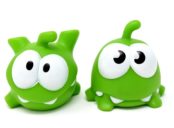Thermometer App: A Comprehensive Guide for Tech Enthusiasts

Introduction:
Thermometer apps have become increasingly popular among tech enthusiasts in recent years. These apps offer a convenient and innovative way to measure temperature accurately using your smartphone. In this article, we will delve into the world of thermometer apps, exploring their features, benefits, and how they have evolved over time. Whether you’re a weather enthusiast or simply intrigued by the latest advancements in technology, this comprehensive guide will provide you with valuable insights into the thermometer app phenomenon.
Understanding Thermometer Apps:

Thermometer apps are mobile applications that transform your smartphone into a portable and efficient temperature measuring device. These apps utilize the built-in sensors in your phone, such as the ambient temperature sensor or the infrared sensor, to gather accurate temperature readings. With just a few taps on your screen, you can obtain real-time temperature measurements from anywhere, anytime.
Key Features and Benefits:
1. Accurate Measurements: Thermometer apps utilize advanced algorithms and sensor technologies to provide highly accurate temperature readings. The precision of these apps rivals that of traditional thermometers, making them a reliable tool for everyday use.
2. Convenience and Portability: Unlike traditional thermometers, which are often bulky and require additional equipment, thermometer apps offer unparalleled convenience and portability. You can now carry a thermometer in your pocket and measure the temperature with a simple touch of your screen.
3. Real-Time Data: Many thermometer apps provide real-time temperature updates, allowing users to stay informed about the latest weather conditions. Whether you’re planning a hike or monitoring the temperature in your home, these apps offer up-to-date and relevant information.
4. Additional Features: Beyond temperature measurement, some thermometer apps offer supplementary features such as weather forecasts, historical temperature data, and customizable settings. These additional features enhance the overall user experience and further differentiate thermometer apps from traditional thermometers.
Historical Evolution of Thermometer Apps:
Thermometer apps have come a long way since their inception. Initially, these apps were basic and provided limited functionality. However, as technological advancements were made, thermometer apps became more sophisticated and feature-rich. Let’s take a closer look at the historical evolution of thermometer apps:
1. Early Adoption Phase: In the early stages, thermometer apps primarily focused on providing basic temperature readings. The accuracy and reliability of these apps were questionable, but they laid the foundation for future advancements.
2. Sensor Integration: As smartphones became more advanced, incorporating various sensors, thermometer apps started utilizing these sensors to improve accuracy. Ambient temperature sensors and infrared sensors were integrated to enhance temperature measurements.
3. User Interface Enhancements: With advancements in user interface design, thermometer apps started offering intuitive and visually appealing interfaces. Graphs, charts, and interactive displays became common features, allowing users to analyze temperature data in a more engaging and accessible way.
4. Connectivity and Integration: Modern thermometer apps now offer seamless integration with other smart devices, such as smart home systems or wearable devices. This allows for a comprehensive ecosystem of temperature monitoring and control, further enhancing the user experience.
Maximizing Visibility as a Featured Snippet:
To optimize the chances of this article being displayed as a featured snippet on Google search, it is crucial to structure the text effectively. Some key strategies include:
1. Utilize and H2 Tags: Start the article with an tag, clearly stating the topic as “.” Throughout the article, incorporate relevant H2 tags to organize and categorize information, such as “Understanding Thermometer Apps” and “Historical Evolution of Thermometer Apps.”
2. Incorporate Bulletpoints: To make the article more scannable and accessible to readers, include bulletpoints when discussing key features, benefits, and historical milestones. For instance:
– Accurate Measurements:
– Utilizes advanced algorithms and sensor technologies.
– Provides precision equivalent to traditional thermometers.
– Convenience and Portability:
– Can be carried in your pocket.
– Provides temperature measurements with a simple touch.
– Real-Time Data:
– Offers up-to-date temperature updates.
– Helps users stay informed about weather conditions.
3. Highlight the Featured Snippet Opportunity: Incorporate a section in the article outlining where the video can be inserted. For example, include the following statement: “
“
Conclusion:
Thermometer apps have revolutionized temperature measurement, offering convenience, accuracy, and real-time data. As these apps continue to evolve, they present new possibilities for integration, connectivity, and enhanced user experiences. Whether you’re a weather enthusiast or simply intrigued by technological advancements, exploring the world of thermometer apps is an exciting journey. By incorporating this comprehensive guide into your tech repertoire, you’ll stay informed and ahead of the curve in this fascinating field.





















